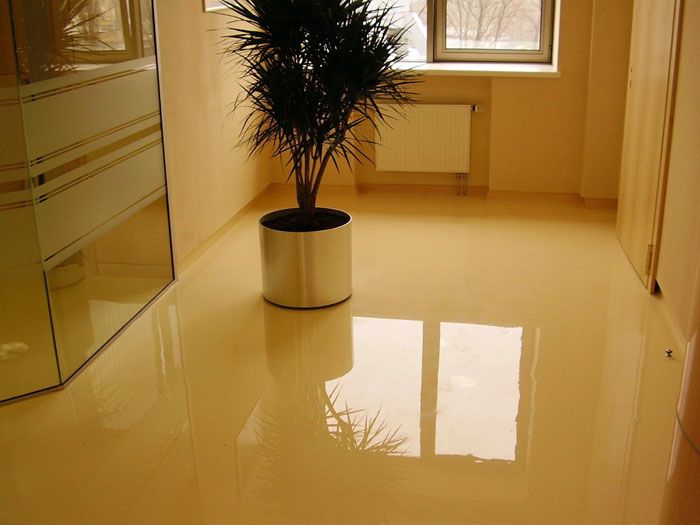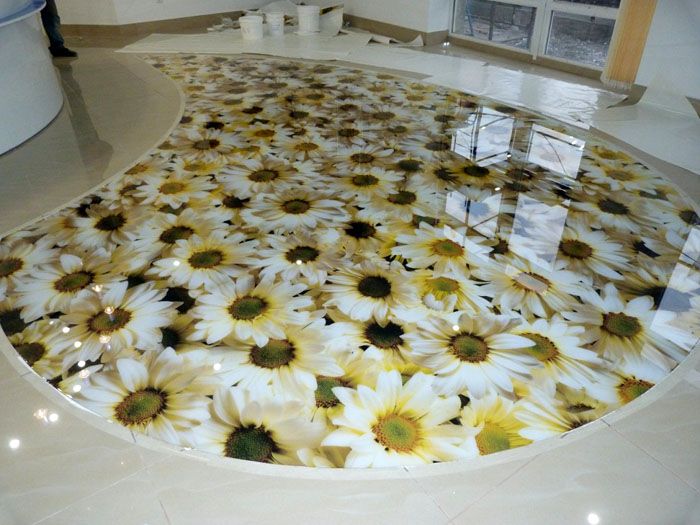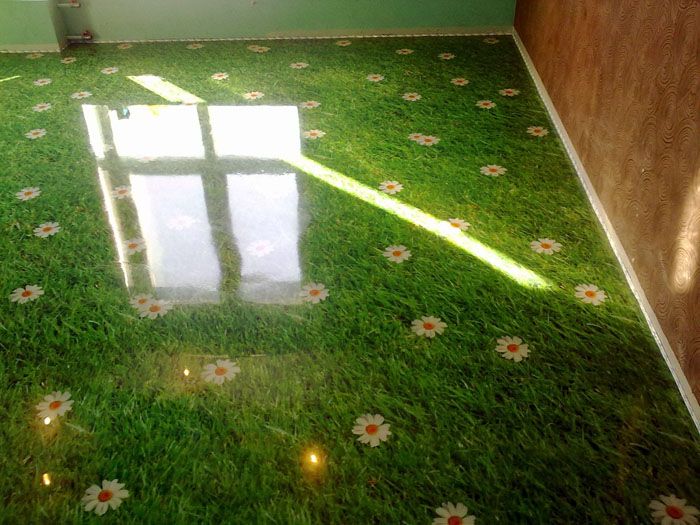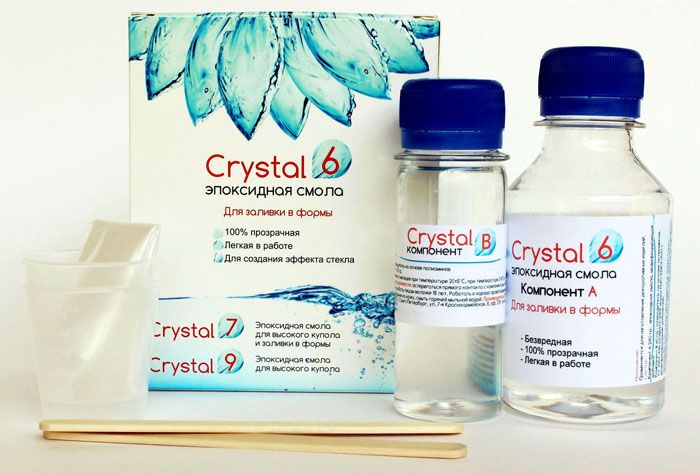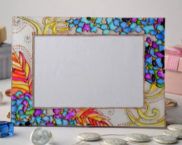How to best use clear epoxy for potting
If you are interested in epoxy, as a very interesting synthetic substance is called in everyday life, it means that you want to expand your own horizons and find out what a transparent epoxy resin is for pouring, why it is needed and where it can be used. All these questions are answered in the article from the homemaster.techinfolux.com/en/ editor.
The content of the article
- 1 Epoxy resin - what is it
- 2 What can be made from epoxy
- 3 Chemical composition and components for epoxy resin
- 4 Performance characteristics of clear epoxy resin
- 5 Popular grades of clear epoxy resin
- 6 How to use epoxy
- 7 Safety precautions when working with epoxy resin
- 8 DIY epoxy resin products - nuances
- 9 At what price can you buy a transparent epoxy resin for pouring - an overview of current offers
- 10 Video: how a miracle is born from wood and epoxy
Epoxy resin - what is it
A synthetic oligomeric compound is called an epoxy resin, which reveals itself in all its glory only with the participation of a hardener - the polymerization process takes place. If you combine different types of resins and hardeners, you can get a material of different characteristics: hard, hard, soft or rubber-like. Epoxy resin is resistant to acids, halogens, alkali, but dissolves in acetone and esters. When using a hardener, the polymerized compound does not emit any volatile substances.
What can be made from epoxy
Not so long ago, epoxy became a discovery. The substance itself has been used since the middle of the 20th century, but it has gained particular popularity in recent years.
Epoxy Jewelry: A Frozen Tale
Creative people once decided to try to repeat a natural miracle: if an insect is frozen forever in amber, then you can probably try to use epoxy for an experiment.It is not known who first came up with this idea, but it became the impetus for a whole trend in Handmade: jewelry made of epoxy resin Krystaldivinely beautiful.

If you have a question, what is a jewelry resin, you can answer this way: these are unlimited possibilities for creating exclusive jewelry

To create unique jewelry, molds are needed for pouring epoxy resin: these can be improvised containers, and purchased figures, and special molds
Lovers of special jewelry do not stop at the already tested products and are constantly looking for new solutions.
Furniture made of wood and epoxy resin: a new word in decor
Transparent epoxy resin began to be actively used for pouring wood. It turned out to be not that hard create a table literally from any processed driftwood, and it quickly turns into a magical miracle.
Epoxy wood glue is made by mixing resin with some hardener. This glue is suitable for various non-porous surfaces.
Pouring the floor with epoxy resin
Due to its performance characteristics, epoxy has been successfully used for pouring floors: wonderful 3D floors have earned all the praise.
The disadvantage of flooring can be considered high labor costs and financial investments. For a floor to be truly durable, it must be poured in strict accordance with the rules.
Other applications
Above was listed the modern use of epoxy in different directions of design and Handmade, but there is also a traditional use dating back more than half a century. Glass fabrics are impregnated with epoxy, and various elements in the field of electrical engineering, radio electronics, automotive and aviation industries are glued with it. The resin has found its application in construction, ship- and mechanical engineering. In construction, epoxy is an excellent material for waterproofing premises.
Related article:
Epoxy resin for creativity: what it is, its scope and main properties; how to choose and use the material in the manufacture of various products - in our publication.
Chemical composition and components for epoxy resin
Epoxy resin is a solution of monomers, oligomers or polymers containing at least two epoxy or glycidyl groups. They are located at the ends and along the main chain of the molecule or in the alicyclic ring and are capable of forming crosslinked polymers under the action of a hardener.
Hardeners and plasticizers
In order for the epoxy to become a full-fledged polymer, two components are added to it as a base: a hardener and a plasticizer.
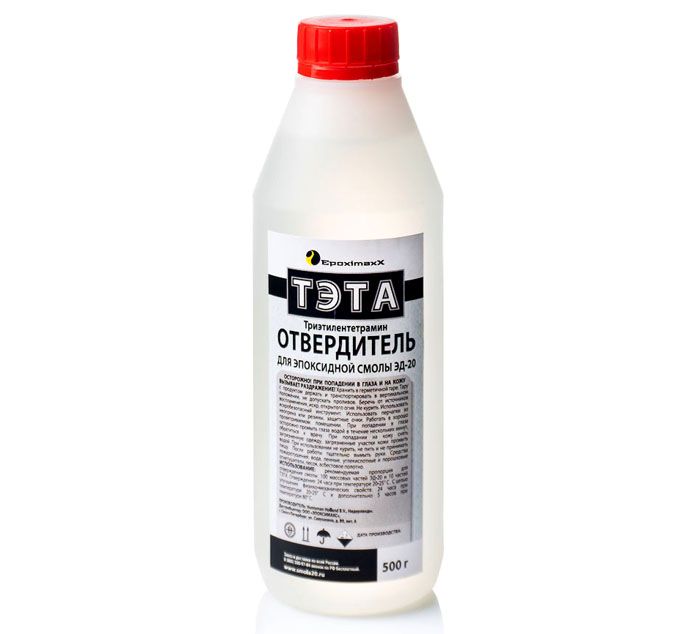
The temperature at which the curing process begins is considered -10 ° С, the upper limit for some resins will be + 200 ° С
The proportions of base and hardener are variable, and here it is important to remember that the polymerization process is irreversible. An excess or lack of a hardening component affects the quality of the product: the promised strength, resistance to heat, aggressive chemicals and water will not be there, the substance will be sticky.
Attention! Different resin and hardener compounds require different proportions, which must be reflected in the instructions.
If the product should not be fragile, a plasticizer is added. If you ignore this element, then a large product will be brittle and cracked.There is a universal plasticizer dibutyl phthalate (DBF), but since it does not react very well with epoxy, the whole composition is heated to 60 ° C for 3 hours, stirring constantly. Resin DEG-1 it is also a plasticizer that reacts well with the base and gives a good plastic effect. The disadvantage of such a component is that it gives a brown tint to the final product.
Fillers and solvents
To save an expensive base, a filler is introduced into its composition. Usually, this component is represented by a finely dispersed mineral powder. Both Portland cement and quartz sand can be used. When fillers are included, the fragility of the product increases.
For some oligomers (ED-16 and ED-20) due to their characteristics, the addition of acetone, alcohol, benzene or ethyl acetate is required. This allows you to add more filler to a high-viscosity liquid, but the composition becomes flammable and explosive. A good solvent is slamor, a shale modifier.
Performance characteristics of clear epoxy resin
Epoxy products have their own characteristics:
- the glue seam is highly durable;
- shrinkage is minimal;
- in solid form, moisture permeability is insignificant;
- resistance to abrasive wear.
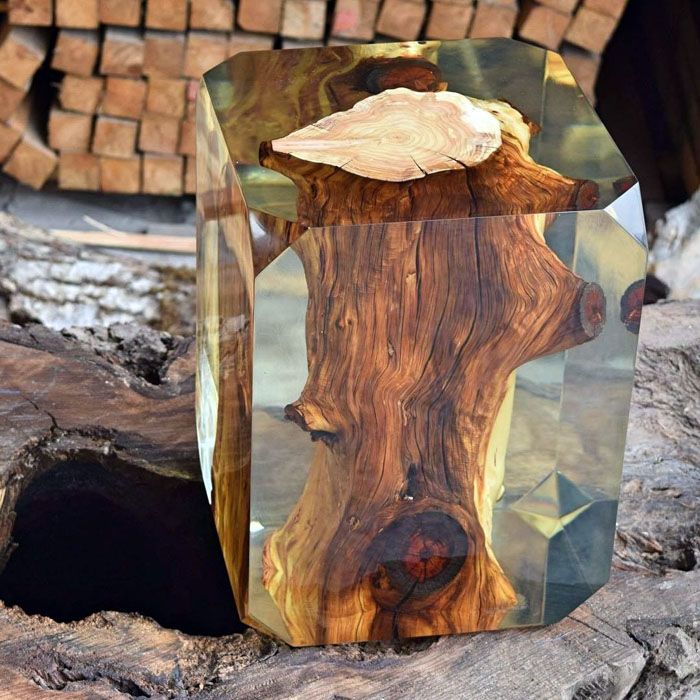
High-quality products can be made from transparent Mg Epox Strong resin that will serve for many years, while maintaining their original appearance.
Popular grades of clear epoxy resin
Epoxy Diane Resins ED-20 and ED-22 are considered universal. Among the imported trains stands out YD-128which is widely used in many industries. Most often used for making jewelry Epoxy Crystal PLUS.
How to use epoxy
Without experience, it is difficult to prepare a composition of some color from a transparent epoxy, but it is quite possible for a beginner to glue it with epoxy resin, since this does not require special skills. After practicing small, you can start large-scale products.
How to make epoxy
If you neglect the rules and instructions and do not calculate the amount of all components, then the composition will quickly become dense and inapplicable. Moreover, the composition is prone to spontaneous combustion if the heating process is disturbed. To prevent this from happening, you need to choose the right hardener, and do not forget to purchase a resin for the chosen purpose.
If you need to prepare a large volume of the composition, then first you need to heat the resin - this will reduce the viscosity. The heating temperature is very important, since even an excess of 10 ° C sharply accelerates the polymerization process.
First, a plasticizer is added during heating and the entire volume is mixed with a construction mixer or a drill with a nozzle. The maximum proportion of plasticizer is 10%. After the resin has cooled to 30 ° C, pour in the hardener in a ratio of 1:10 (here you can vary slightly). The stirring must be constant! Otherwise, the hardener will not spread evenly and sweat.
Important! Exceeding the concentration of the hardener will cause the epoxy to boil and deteriorate.
Pouring products with epoxy resin
The product must not contain air bubbles, and for this the curing process must go smoothly and evenly. You can pour a product thicker than 2 mm in layers: each layer is applied to the already polymerized previous one.
As soon as the work is completed, the finished product must be kept at a temperature slightly higher than room temperature. Primary polymerization occurs after 3 hours, and full polymerization, provided that it warms up in an oven after 6 hours. If there are no such conditions and curing occurs at room temperature, then the finished product will be in a week.
Safety precautions when working with epoxy resin
The most important thing in work is to remember that the composition is hazardous to health in an unpolymerized form.
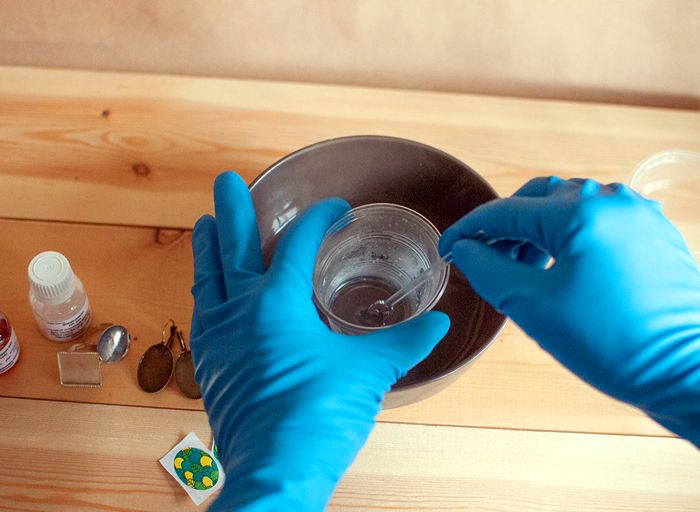
Safety measures first! Work is carried out only in protective clothing and gloves, since any compound threatens with dermatitis, skin burns, and respiratory damage
The safety rules are as follows:
- it is forbidden to use food utensils for working with epoxy;
- if the finished product is sanded, it is done with goggles and a respirator;
- remember the shelf life and temperature no higher than 40 ° C;
- if the composition gets on the skin, it must be washed off immediately with soap and water;
- all work is carried out in a well-ventilated area.
In case of contact with the skin, epoxy is immediately washed off with soap and water or wiped off with denatured alcohol.
DIY epoxy resin products - nuances
To make an epoxy product perfect, you need to remember some manufacturing points:
- the surface to be treated must first be degreased;
- the gloss on the surface is removed by grinding with sandpaper or a special machine, dust is removed with a vacuum cleaner;
- if the work is performed by overlaying layers, then they are applied to the incompletely polymerized previous layer;
- at the beginning of work, the resin is liquid and perfectly fills all corners of the form, and after slightly thickening, it forms lenses well;
- epoxy resin will not glue polyethylene, silicone, polypropylene, rubber, but these materials are very suitable as forms;
- in the process of hardening, a rubber phase occurs - at this time the product can be bent, if necessary, but it will be necessary to fix it in this position.
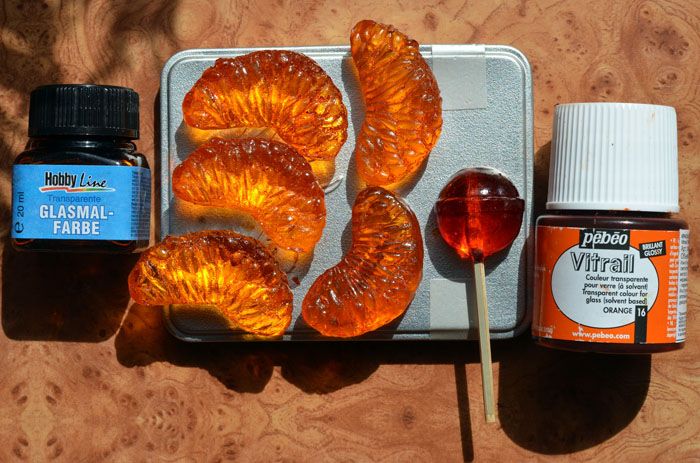
The resin is beautifully colored with toner, helium pen ink, felt-tip pen paints, stained glass paints
It is unacceptable to work with high air humidity and do not allow moisture to enter the resin. It also makes no sense to make products at high temperatures, the composition can boil and form a lot of bubbles.

Due to the fluidity of the substance, it makes no sense to try to replace the varnish for embossed objects, and if it is a flat object, then it should be placed strictly horizontally
When a bubble appears near the surface, it must be blown through the beverage tube.
Advice! If you do not want the resin to turn yellow over time, you need to buy a composition with a UV filter.
At what price can you buy a transparent epoxy resin for pouring - an overview of current offers
Now, briefly about the main thing: where to buy epoxy resin and how much it costs.
The price of a transparent epoxy resin for pouring ED-20 is an average of 700 rubles. per 1 kg, and it is sold in packs of 5 kg. Hardeners and plasticizers cost about the same. Jewelry resins can be purchased at a price of 500-800 rubles for 150 g. They are sold in one kit with the necessary components.









